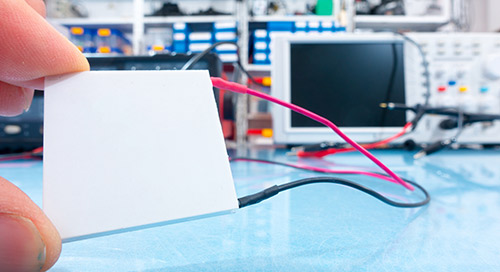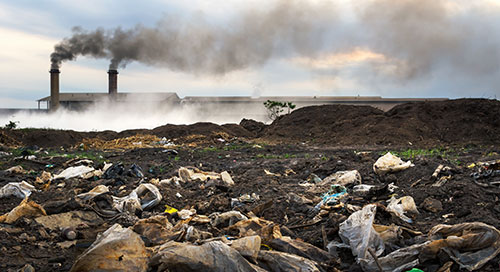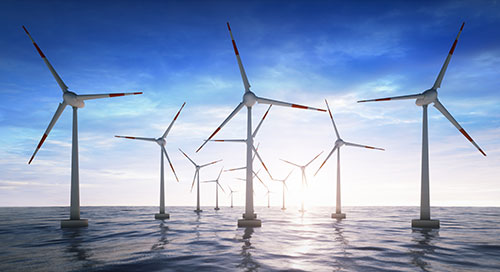the-future-of-the-aerospace-industry-and-sustainability
July 18, 2022
On the Future of Aerospace Industry and Sustainability
By Saeed Farokhi
Author of Aircraft Propulsion: Cleaner, Leaner, and Greener, 3rd Edition and Professor Emeritus of Aerospace Engineering at the University of Kansas, USA, Saeed Farokhi's main areas of research are propulsion systems, flow control, renewable energy, and computational fluid dynamics. He is a Fellow of the Royal Aeronautical Society and the American Society of Mechanical Engineers as well as an Associate Fellow of the American Institute of Aeronautics and Astronautics. We asked him how he sees the future of the aerospace industry developing in line with sustainability.
How have the last two years affected the aerospace industry?
There are three factors in my answer to this question: the impact of Covid, climate change, and, finally, technology. The Covid pandemic brought delivery of new aircraft almost to a halt, as the flying public stayed home and worked online. The situation is reversing, and the new aircraft orders are picking up and flights resuming in full force.
On the climate front, we now have universal acknowledgement of the climate change caused by human activity and emissions. This has brought governments to act in unison towards a common goal. The impact of aviation on climate change, in particular carbon emissions, is no longer in dispute. Aviation has received special attention since it is the fastest growing sector in transportation.
On the technology front, we have seen promising strides on the energy side of the sustainability equation, be it on sustainable aviation fuels (SAF), green hydrogen, or higher energy density batteries. The advances in gas turbines and electric propulsion have seen great strides as well.
What are the most exciting developments related to alternative fuels and/or aircraft emissions?
There are in fact two exciting developments on alternative fuels. One is the SAF, which is a drop-in alternative jet fuel based on used cooking oil and waste fats, that may be used in existing engines and aircraft.
The second is green hydrogen, which requires either new aircraft designs or modifications to existing aircraft to accommodate liquid hydrogen which is volumetrically less efficient than conventional hydrocarbon/fossil fuels. Tremendous effort in Europe has focused on hydrogen and the US has, for now, favored SAF to meet near-term goals on sustainable aviation.
What will it take for the industry to embrace them?
The aviation industry, on both sides of the pond, has already made solid commitments to a goal of net zero carbon aviation emissions by 2050. With the impacts of climate change clear, not much persuasion is needed.
Costs however will remain a challenge. Subsidies on the production of alternative jet fuels, distribution networks, storage, and truck deliveries to aircraft will go a long way towards meeting the goal of net zero carbon aviation emission..
More generally what are the most promising new technologies on the horizon?
Development of advanced batteries and high-temperature superconducting materials for use in distributed electric propulsion systems have shown promising results. Battery energy densities of 500 kWh/kg are on the horizon. General aviation (GA) from battery VTOL (Vertical Takeoff and Landing) to battery CTOL (Conventional Takeoff and Landing) and hydrogen/battery hybrid CTOL are the technology demonstrators of the zero carbon GA in 2040 program.
Autonomous drones are in a hyper-rapid R&D phase and are envisioned to be an integral component of the future sustainable aviation industry.
Finally, development of compact fusion reactor (CFR), which is progressing fast, will be the ultimate grand challenge of the 21st century.
What other areas benefit the most from aerospace research?
The transportation sector, land and sea, naturally benefit the most from aerospace research. Also, a totally new aviation sector called Urban Air Mobility (UAM) enters the market. The piloted and the autonomous eVTOL point-to-point transportation system competes with congested airport and city center ground transportation. Passengers will be taking eVTOL service between heliports, which creates new business opportunities (and challenges) in autonomous air taxi service. The congestion around airport terminals will be reduced due to fewer taxi/bus/train customers.
The goals of sustainable aviation, i.e., net zero and negative carbon emission, will accelerate international travel and tourism. It will serve as a means of distributing or sharing economic prosperity on a global scale. Green hydrogen research and development impacts sustainable energy production and distribution, while carbon sequestration research/technology will also benefit the land-based power production industry.
Finally, the central role of AI (Artificial Intelligence) and ML (Machine Learning) that is inherent in autonomous flight, will impact the auto, marine, medicine, and entertainment industries, as we know them today.












